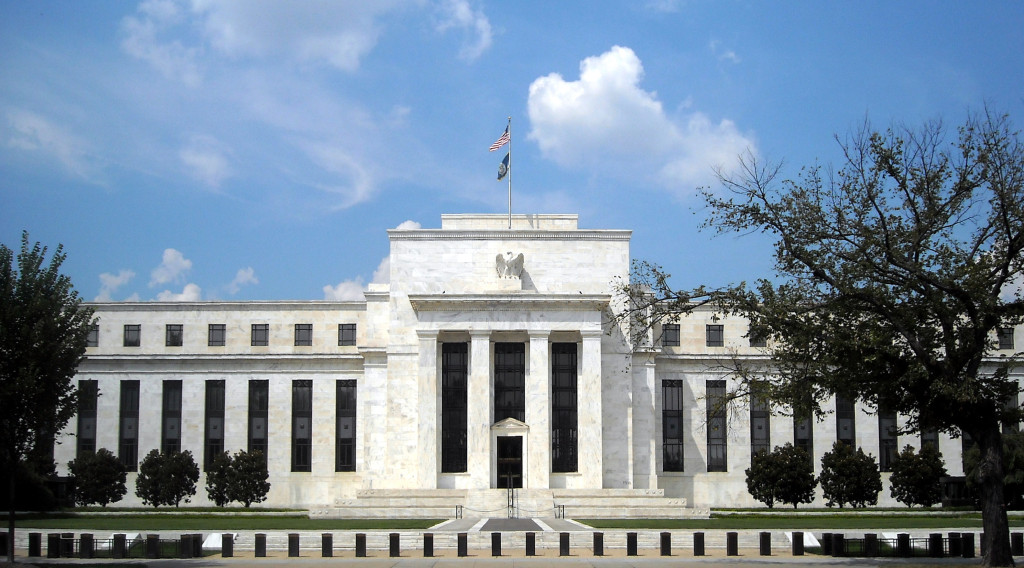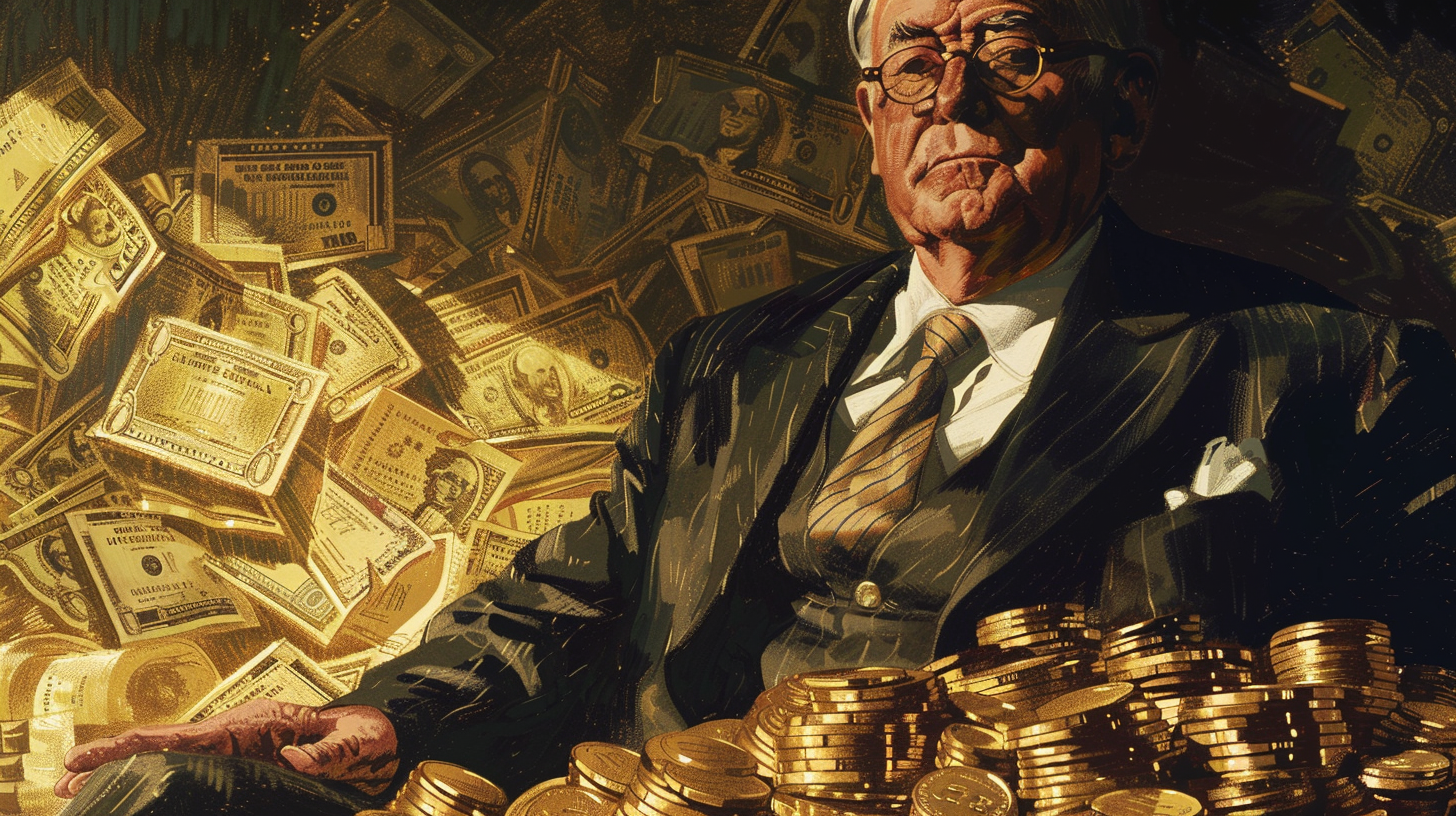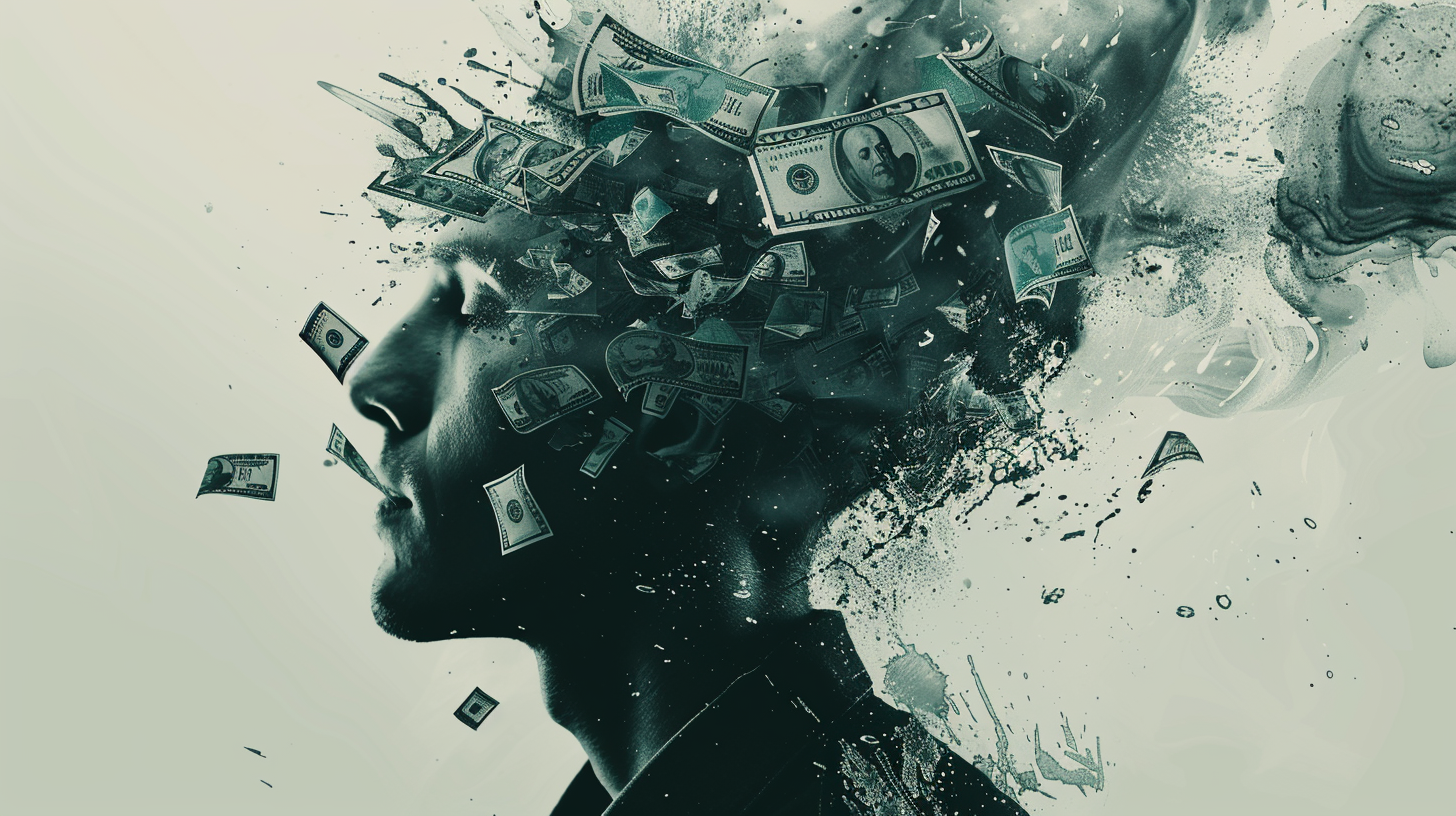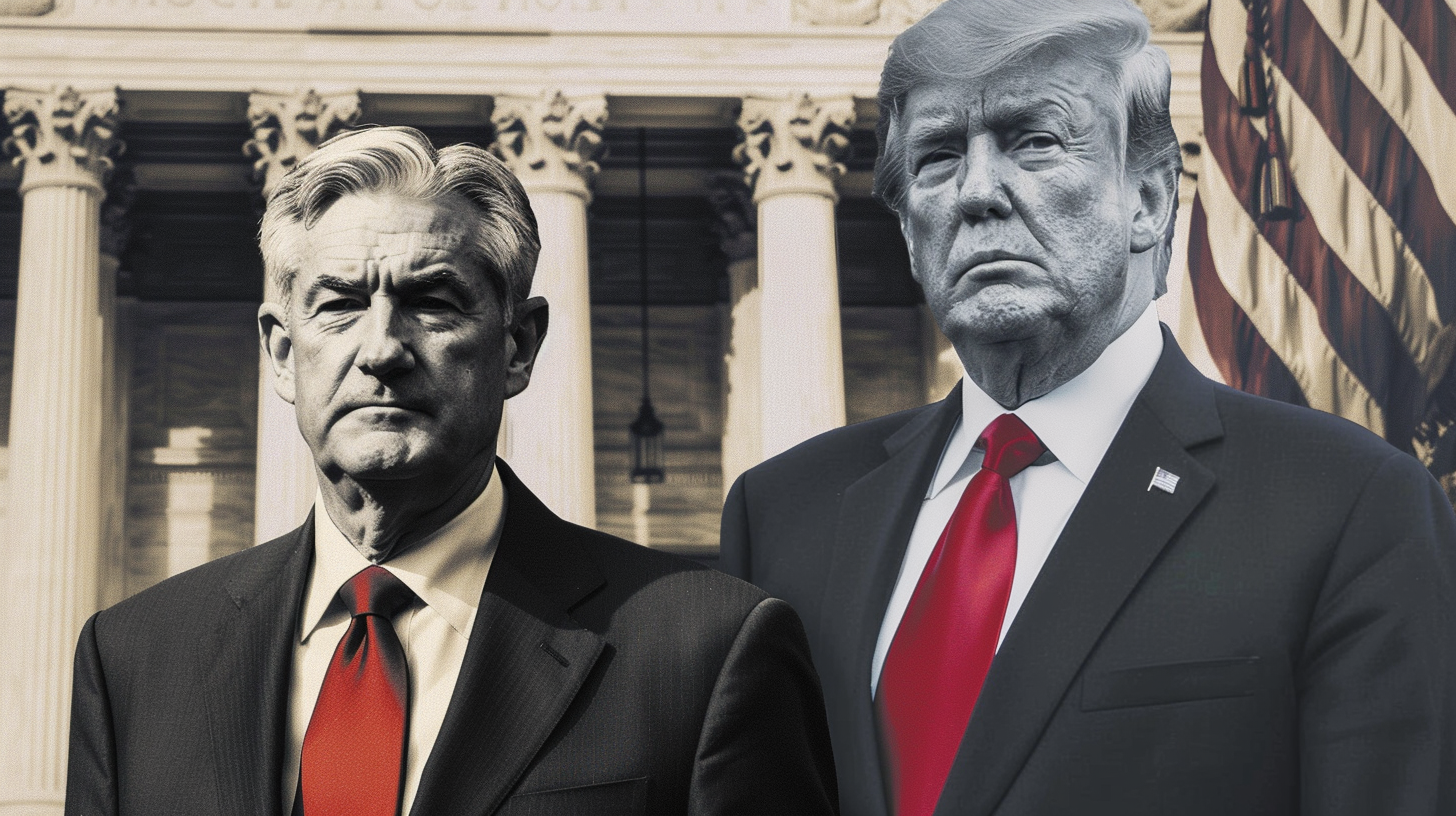In Fed We Trust…Or Do We?
There’s been a lot of focus on the Federal Reserve lately.
Earlier this month, the central bank launched efforts to shrink its balance sheet after years of quantitative easing. Most analysts also expect one more interest rate increase this year. Then there is rampant speculation about who will take the reins at the Fed when Janet Yellen’s term ends early next year. Many observers think Trump will pick a more hawkish Federal Reserve chair who will increase the pace of “normalization.”
But Peter Schiff has said ultimately the Fed doesn’t want to do anything to upset the status quo. And at this point, the central bank is between a rock and a hard place. It can normalize, which will ultimately pop the bubble, or it can continue with its easy money policies and wreck the dollar. Peter has said the Fed will ultimately sacrifice the dollar on the altar of the stock market.
In a recent article published on the Mises Wire, economist Ryan McMaken weighs in, arguing along these same lines. He says the Fed won’t do anything that will spook the markets. That means we can expect more “easy money.” But this raises a question – what happens when the next recession rolls along?
![]()
At this point, does anyone believe the Fed is willing to do anything that might really spook markets?
During the 1990s, back in the days of “Maestro” Alan Greenspan, it was widely believed that investors should pay careful attention to every word uttered by Fed chairman for clues as to where Fed policy was headed in the near future.
Did Greenspan seem to favor higher interest rates, or was he keeping the money spigots open for the foreseeable future? If it looked like there was no threat of rising rates, then the markets responded bullishly. Monetary policy in that era was still easy-money oriented, historically speaking. But, the target rate did rise above six percent at times, so when the Fed chairmen talked about “tightening” there might at least be some mild rate hikes on the horizon.
Market fear of Fed tightening appears to have lasted even until 2013 with the so-called “taper tantrum.” In May of that year, the Fed announced it would begin cutting back on its purchases of bonds and mortgage-backed securities in an effort to move toward more normal monetary policy.
It was by no means a radical change, and the Fed certainly wasn’t about to significantly cut back its huge portfolio that it had amassed in the wake of the financial crisis to keep asset prices high.
Nevertheless, the market did indeed throw a tantrum in 2013 in the form of a large sell-off in bonds causing yields to skyrocket over a period of months. In the end, the taper did not signal any sort of meaningful “normalization” in monetary policy, nor did it bring about a return to more ordinary target interest rates. Wall Street went back to business as usual.
By late 2015, we were hearing regularly — now from Bernanke’s replacement Janet Yellen — that the Fed would “soon” be raising target interest rates and cut back the Fed’s huge portfolio. By early 2017, though, all the Fed had managed to do was raise the target rate to slightly above one percent. The balance sheet remained untouched.
It seemed the market was learning to face the Fed’s regular threats of “normalization” with healthy amounts of skepticism.
After eight years of making empty threats about rate hikes and portfolio sell-offs, the markets are now receiving the Fed’s latest proposed “unwind” of its balance sheet with mostly yawns.
As of October 2017, stock markets continue to soar, and there’ been no sell-off in bonds as occurred in 2013. In other words, as the Fed increasingly talks about its unwind, markets seem nonplussed, to say the least.
One investment analyst quoted in MarketWatch, Peter Boockvar, called the investment world’s lack of reaction a “delusional” complacency, although it’s hard to blame the markets for doubting that any big changes will happen.
So far, the Fed has given little indication that it’s willing to do anything to upset the apple cart. After all, in recent years, after numerous quarters of claiming the market was growing and fundamentally sound, the Fed proceeded with only the tiniest movements on target rates. All while not touching its balance sheet. It’s been nearly nine years since the Fed launched the new era of “unconventional” monetary policy. At this rate, it will take another nine years before target rates and the Fed’s balance sheet approach even anything that might remotely be called normal.
So why should markets be spooked? If one had to guess what the Fed is really going to do over the next few years, this is as plausible a scenario as any: the Fed will continue with only the tiniest changes to its balance sheet and the target rate. If any negative macroeconomic news shows up, the Fed will announce a need for “caution” and cancel any plans at the unwind or in raising rates. When the next recession hits, the Fed can be sure to cancel all plans for tightening, and it may even throw in a few bailouts to make sure Wall Street doesn’t have to endure too much pain.
For many in the financial media, and in the pundit class in general, this too-scared-to-act routine from the Fed strikes many commentators as a type of wisdom in which the Fed slowly and deliberately calculates all the scenarios and proceeds with an almost preternatural understanding of what’s really going on.
But there’s no special knowledge at work here. What we’re witnessing is simply a central bank that’s too afraid to do anything, portrays its lack of actions as calculated prudence.
Desperate to believe that someone knows what’s going on, the financial media, DC politicians, and Wall Street investors are playing along.
Get Peter Schiff’s most important Gold headlines once per week – click here – for a free subscription to his exclusive weekly email updates.
Interested in learning how to buy gold and buy silver?
Call 1-888-GOLD-160 and speak with a Precious Metals Specialist today!





 Beneath the veneer of headline job gains, the American economy teeters on the brink: native employment dwindles as part-time and immigrant jobs surge. Government hiring camouflages looming recession warnings. Inflation and political blunders worsen the crisis, fueling public outrage at the establishment’s mishandling of the economy.
Beneath the veneer of headline job gains, the American economy teeters on the brink: native employment dwindles as part-time and immigrant jobs surge. Government hiring camouflages looming recession warnings. Inflation and political blunders worsen the crisis, fueling public outrage at the establishment’s mishandling of the economy. On April 5 1933, Franklin D. Roosevelt abandoned the gold standard, wielding questionable legal power amidst America’s dire economic depression. His whimsical approach to monetary policy, including coin flips and lucky numbers, unleashed unprecedented inflation and price increases that have since amounted to nearly 2500%. Our guest commentator explores this tragic history and the legacy […]
On April 5 1933, Franklin D. Roosevelt abandoned the gold standard, wielding questionable legal power amidst America’s dire economic depression. His whimsical approach to monetary policy, including coin flips and lucky numbers, unleashed unprecedented inflation and price increases that have since amounted to nearly 2500%. Our guest commentator explores this tragic history and the legacy […] Welcome to the world of modern economics where the term “inflation” no longer signifies the increase in the quantity of money, but has evolved into a plethora of buzzwords. From “shrinkflation” to “greedflation,” these new terms and semantic shifts are by no means harmless but a manipulation of popular sentiment. Von Mises said they play […]
Welcome to the world of modern economics where the term “inflation” no longer signifies the increase in the quantity of money, but has evolved into a plethora of buzzwords. From “shrinkflation” to “greedflation,” these new terms and semantic shifts are by no means harmless but a manipulation of popular sentiment. Von Mises said they play […] Assuming CPI measurements are not understatements, the dollar’s value has plummeted by a staggering one-fifth since 2020, yet, rather than acknowledging its role in fueling this economic turmoil, the Biden administration deflects, casting capitalism and corporate greed as the villains. The latest February CPI data show more signs of the upcoming inflation bloodbath.
Assuming CPI measurements are not understatements, the dollar’s value has plummeted by a staggering one-fifth since 2020, yet, rather than acknowledging its role in fueling this economic turmoil, the Biden administration deflects, casting capitalism and corporate greed as the villains. The latest February CPI data show more signs of the upcoming inflation bloodbath. The Federal Reserve is often viewed as a neutral guardian of the economy, tasked with safeguarding employment and ensuring stable prices. However, the Fed is run by individuals who, like anyone else, are swayed by certain motivations. Do the people behind the Fed truly have the incentive to remain impartial? Our guest commentator demystifies the […]
The Federal Reserve is often viewed as a neutral guardian of the economy, tasked with safeguarding employment and ensuring stable prices. However, the Fed is run by individuals who, like anyone else, are swayed by certain motivations. Do the people behind the Fed truly have the incentive to remain impartial? Our guest commentator demystifies the […]